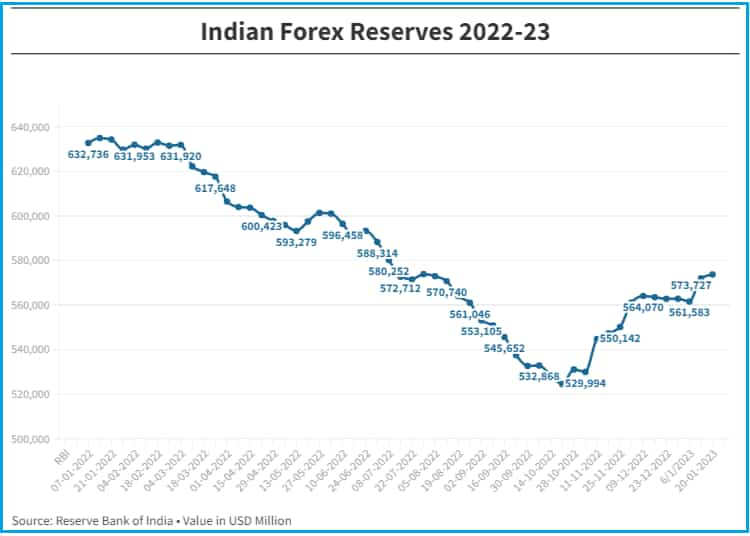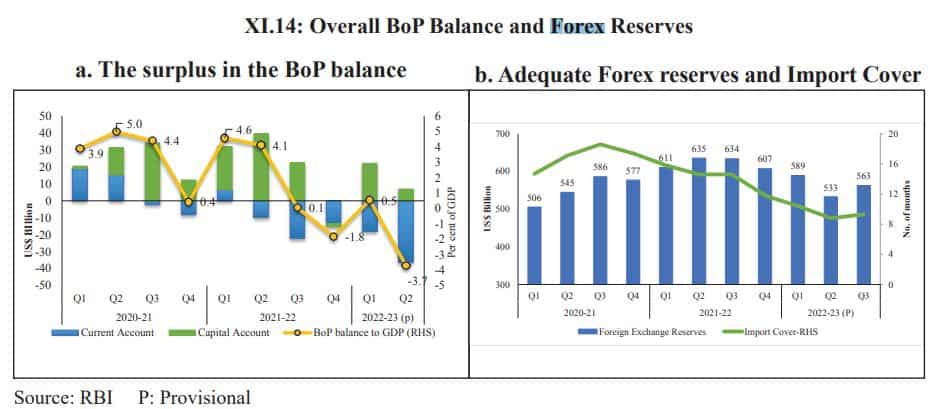Foree reserves have become a critical indicator of a nation’s financial health, reflecting its ability to meet its external obligations and sustain economic growth. India has made significant strides in building up its forex reserves over the past two decades, emerging as one of the top reserve holders globally. This article will delve into the intricacies of India’s forex reserves, tracing its growth trajectory from 2000 to 2019 and exploring its implications for the nation’s economic well-being.

Image: www.zeebiz.com
A Surge in Reserves: A Reflection of India’s Growing Economic Strength
In the year 2000, India’s forex reserves stood at a mere $33.18 billion. Over the ensuing years, the reserves embarked on a remarkable growth spurt, driven by a surge in foreign capital inflows, particularly foreign direct investment (FDI) and foreign institutional investment (FII). By the end of 2019, the reserves had soared to an impressive $487.6 billion, representing a staggering increase of over 1,450%.
This remarkable accumulation of forex reserves has been a testament to India’s growing economic resilience. The reserves provide a buffer against external shocks, allowing the country to withstand fluctuations in foreign exchange markets and ensuring the stability of the Indian rupee.
Composition and Management of India’s Forex Reserves
India’s forex reserves primarily comprise foreign currency assets, along with gold and Special Drawing Rights (SDRs). The Reserve Bank of India (RBI), India’s central bank, is responsible for managing the country’s forex reserves. The RBI diversifies the reserves across various currencies, including the US dollar, euro, British pound, and Japanese yen, to mitigate currency risks.
The management of forex reserves involves a delicate balancing act. The RBI must maintain adequate reserves to ensure financial stability while also ensuring that the reserves are not excessive, as this could lead to opportunity costs in terms of potential investment returns.
Drivers of India’s Forex Reserve Growth
The robust growth of India’s forex reserves can be attributed to several factors:
- Increased FDI and FII inflows: India has emerged as an attractive destination for foreign investors, particularly in sectors such as manufacturing, telecommunications, and financial services. This has led to a surge in FDI and FII inflows, contributing significantly to the country’s forex reserves.
- Strong export performance: India’s export sector has witnessed steady growth, boosted by sectors such as pharmaceuticals, gems and jewelry, and information technology. This has increased the inflow of foreign exchange earnings, further bolstering the forex reserves.
- Strengthening remittances: Overseas Indians have played a crucial role in boosting India’s forex reserves through their remittances. These remittances have provided a stable source of foreign exchange inflows, particularly during times of economic slowdown.

Image: www.zeebiz.com
Impact of Forex Reserves on India’s Economy
India’s burgeoning forex reserves have had a profound impact on the country’s economy:
- Reduced external vulnerability: The high level of forex reserves provides a cushion against external shocks, such as a sudden reversal of capital flows. This reduces India’s vulnerability to financial crises and external shocks.
- Maintained exchange rate stability: The RBI uses forex reserves to intervene in the foreign exchange market, preventing excessive volatility in the exchange rate of the Indian rupee. This stability is vital for international trade and investment.
- Increased credibility: Ample forex reserves enhance India’s credibility in the eyes of international investors and credit rating agencies. This has led to lower borrowing costs and improved access to international capital.
Forex Reserve Of India 2000 To 2019
Tips for Effective Forex Reserve Management
- Diversify holdings: The RBI should continue diversifying its forex reserves across currencies and asset classes to mitigate risks.
- Investment strategies: Explore investment strategies that enhance the returns on forex reserves without compromising their stability.
- Collaboration with other central banks: Foster collaboration with other central banks and international institutions to manage global economic volatility and






